1
HOME > Fashion History >
UNDERSTANDING THE DIFFERENT TYPES OF DRESS CODES
Written by Ivan Yaskey in Fashion History on the 4th January 2023
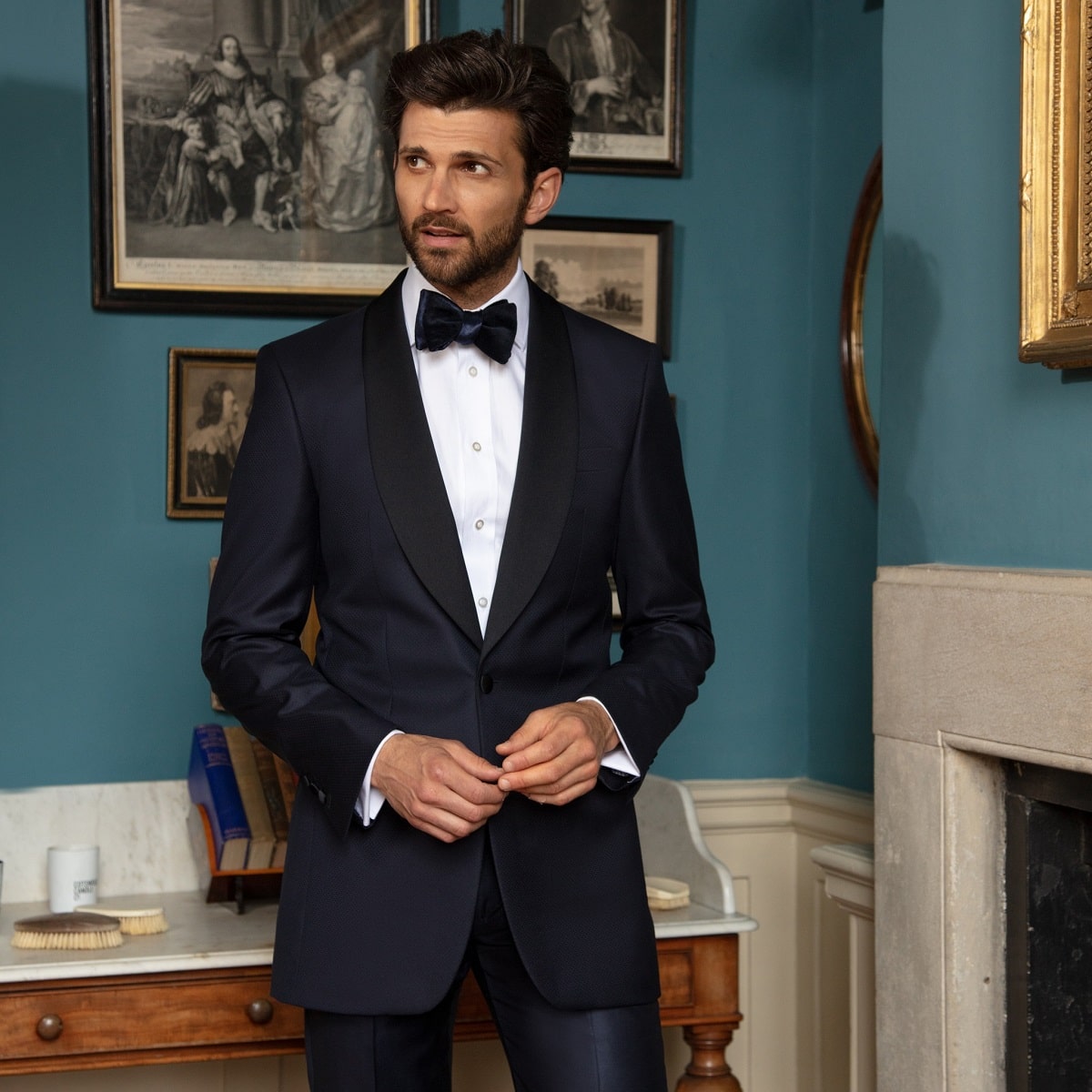
In the present time, dress codes seem divided between casual and not. It’s T-shirts versus suits, trainers versus oxfords, and pocket squares versus a pendant necklace. However, nuances emerge: You know these as smart casual and business casual, and perhaps the differences between cocktail and formal attire. Especially if you’re invited to a wedding or expected to attend a formal work event, the more refined, detailed rules matter. Showing up in a black suit might come off as socially unaware – didn’t you know to wear navy? Or, your default navy number with the notched lapels might be too low key if the invitation specifies a black tie dress code. While proper distinctions seemed to matter more in decades past, they still resurface on occasion today. Here’s a rundown of the basics from the most to least formal:
White Tie
Truth be told, most of us will go our lifetimes without ever having to dress for white tie. It’s one of those ultra-formal, ultra-specific dress codes that’s been on the way out since the mid-20th century, unless you travel in extremely posh circles where you’re invited to galas or debutante balls. Still, in the rare event you have to show up in white tie or “full dress,” realize that it’s more of a uniform than a suit with some room for individuality. Here, the dress code calls for a black, double-breasted tailcoat jacket with peak lapels that shows some of your shirt’s cuff, matching high-waisted tuxedo-style trousers, and a white shirt with a winged collar. True to the name, you’re expected to wear a white bow tie – hand-tied, as opposed to clip-on – and preferably hold up your trousers with suspenders. A white waistcoat fits over. For shoes, it’s a no-brainer: Bring out your most formal black leather oxfords.
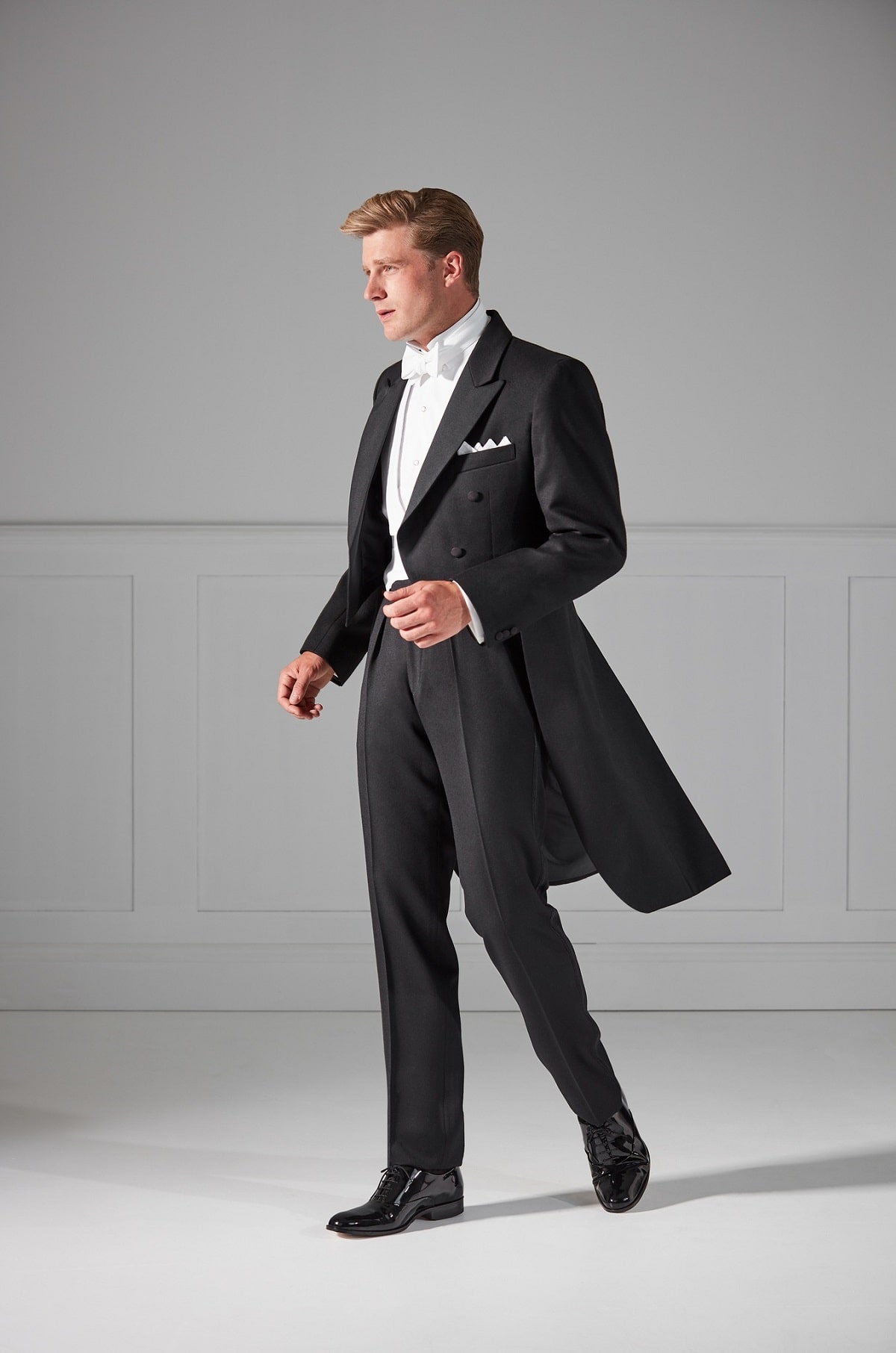
Black Tie
Basically, black tie constitutes a tuxedo or dinner suit intended to be worn for an evening affair. With a couple of exceptions, your suit – or tuxedo trousers and dinner jacket – is solid black paired with a winged-collar white shirt featuring French cuffs. The jacket is perhaps the most definitive aspect of black-tie dressing: These requirements still in place for formal weddings and other equally upscale affairs call for a peak or shawl lapel made of silk for a textural contrast. This is naturally paired with tuxedo trousers, often featuring a matching silk stripe to camouflage the outseam. You have the option of wearing a waistcoat or black cummerbund underneath. Aside from these basics, you’ll don a solid black hand-tied bow tie, more subtle cufflinks, and matching oxfords. To get into the exceptions, you’ll swap out the traditional black for a white tuxedo jacket if the event if held during a warmer season. Then, there’s Black Tie Optional – the “option,” in this case, is choosing between a tuxedo or a solid black suit with notched lapels plus a black necktie. Black Tie Creative, meanwhile, opens the door to adding other textures – think velvet – or patterns to the traditional tuxedo or shawl-collar dinner jacket silhouette.
Semi-Formal
Like black tie, semi-formal is divided into day and evening iterations. Especially with black tie becoming less common, semi-formal tends to be the default expectation for most upscale, elegant events. Here, a dark-coloured suit – charcoal, navy, or grey, rather than black – is your foundation. Steer away from prints, as they can come across as too busy, fanciful, or statement making. At this stage, the dress code is about blending in, rather than expressing individuality. You’ll lighten your suit to blue or tan for a daytime event. A point-collar shirt in a neutral shade – think white or blue – or a smaller pattern, plus a necktie without a print, complete your ensemble. Opt for black or brown oxfords.
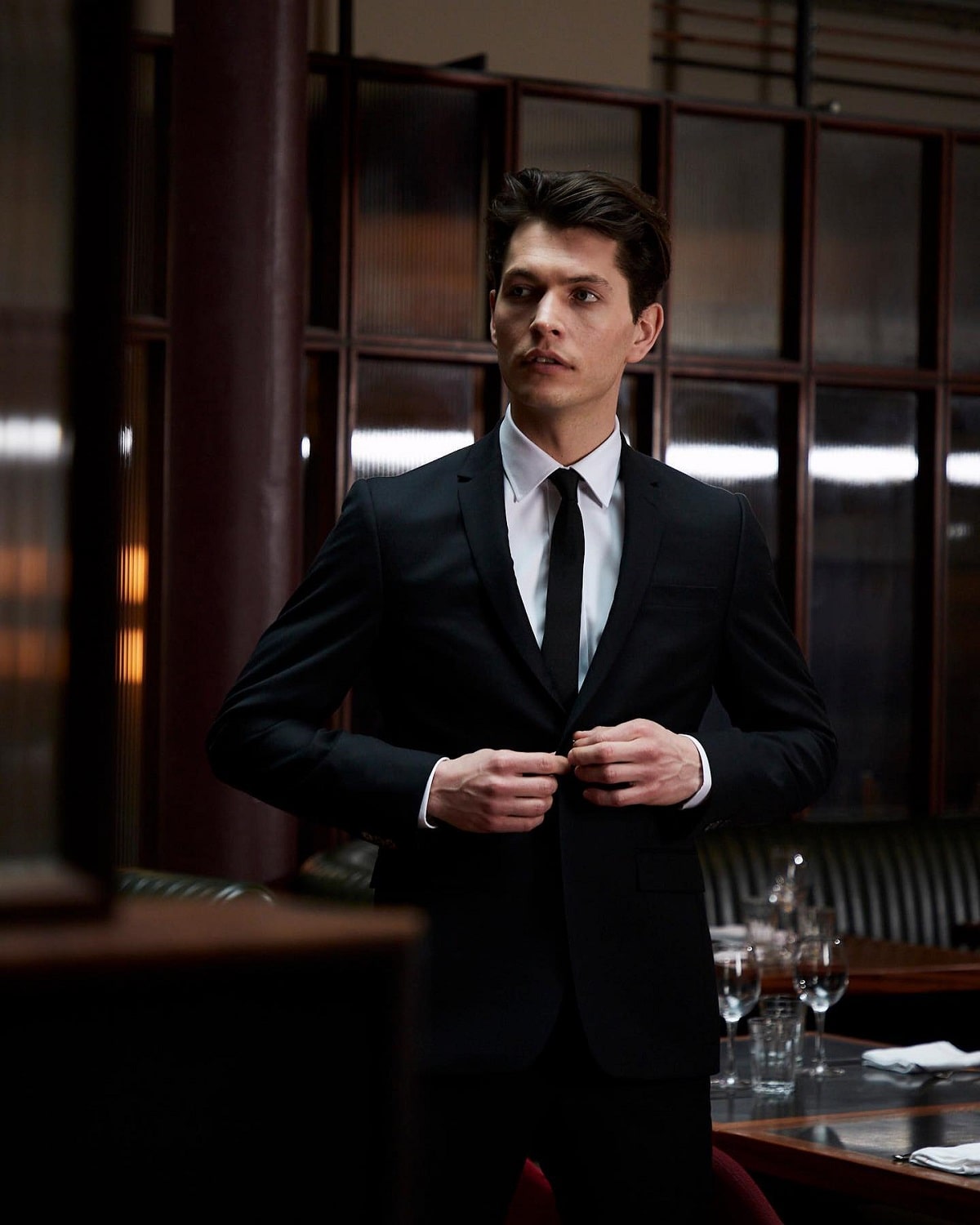
Cocktail
If you own a patterned suit or something in a less-conventional colour (think cobalt or purple), cocktail opens the door to wider self-expression. It’s also a dress code allowing for more choices – and, as a result, increasingly replaces semi-formal for weddings and parties. A suit is still your general framework, although polished trousers and a coordinated suit jacket are acceptable. With either, continue to aim for a slim to regular tailored fit. You’ll pair this with a dress shirt – here, too, patterns aren’t frowned upon – or a more elegant knit, like a fine-gauge rollneck. For footwear, continue adhering to the oxfords-or-derbys dichotomy, perhaps with some material shakeups or brogue details. Cocktail dressing further presents more freedom in terms of accessories. Ties aren’t always expected – and slimmer is preferred – while a pocket square or more decorative cufflinks add a touch of flair and speak to your personality. The key, here, is coming off as your best, most elevated self.
Business Formal
Business formal is one of those conventions that’s gradually on the way out. Still, you’ll see it in law offices, finance, and select government settings, and are expected to keep these more conservative standards in mind if invited to an industry event or conference. Generally speaking, you’ll bring out a dark-coloured, single-breasted, notch-lapel two-piece suit, preferably in navy, charcoal, or grey, in a solid shade or with pinstripes, and pair it with a white or blue point-collar dress shirt. A necktie is expected – nothing flashy, of course – and leather oxfords or derbys in a matching shade complete your basics. As a refresher, never pair your navy suit with black oxfords; instead, brown is a less jarring combination. Beyond this framework, fit communicates professionalism: Slim to regular is still in, so avoid a modern-day or ‘90s-esque baggy fit, as well as anything too skinny. Cuffs aren’t always specified: Barrel is, of course, more common, but French cuffs don’t appear overtly formal for this setting.
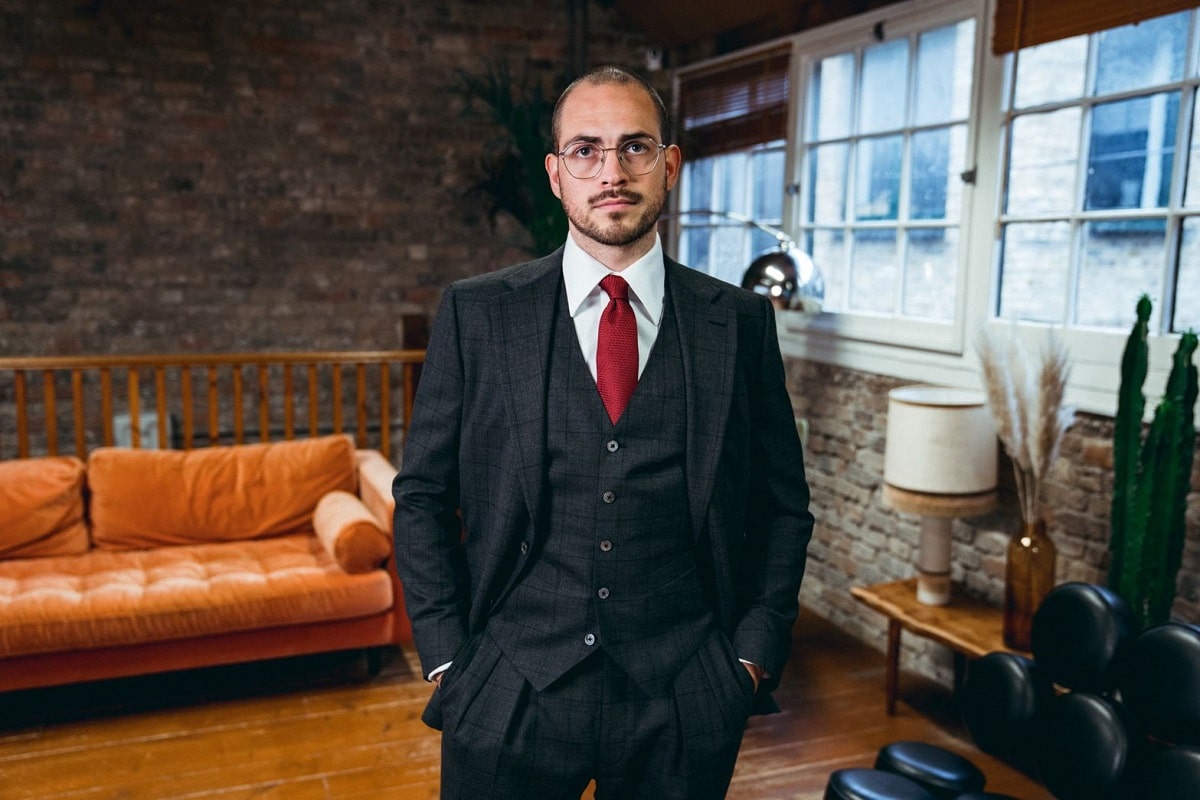
Business Casual
Business casual has developed a dowdy reputation over the past two decades and continues to be replaced with smart casual aesthetics. Most might not notice the difference. As a starting spot, realize that a full suit isn’t required. Instead, dress trousers or chinos, often paired with a single-breasted, notch-lapel blazer, get you started. From here, adding a collared shirt – from a point collar to a polo – communicates more relaxed professionalism, although a sweater can work for cooler weather. Continue to stay within a more neutral palette of grays, blues, white, and tan, although some checks and narrow stripes are acceptable. As another factor separating business casual from business formal, a tie isn’t always necessary. For footwear, trainers are still too casual. Instead, opt for derbys, loafers, chukkas, or something with a monk strap.
Smart Casual
We’ve covered what constitutes smart casual in the past. Typically, this is your everyday, average-to-creative office wardrobe. Seek out darker to mid-wash denim free of obvious fading and embellishments or play it safe with regular- to slim-fitting chinos. For up top, lean toward a collared shirt or tailored-fitting knit or T-shirt, but realize that a blazer can seem like overkill. Rather, in offices where the air conditioning is on at full blast, you’ll essentially see many reaching for a cardigan or quarter-zip fleece. Throughout, neutral colours, as well as smaller checks and stripes, keep everything coordinated and veer away from bold statements. Also, as you’ve likely seen, dress sneakers offer that comfort-meets-polished hybrid, although derbys and lace-up boots are serviceable.
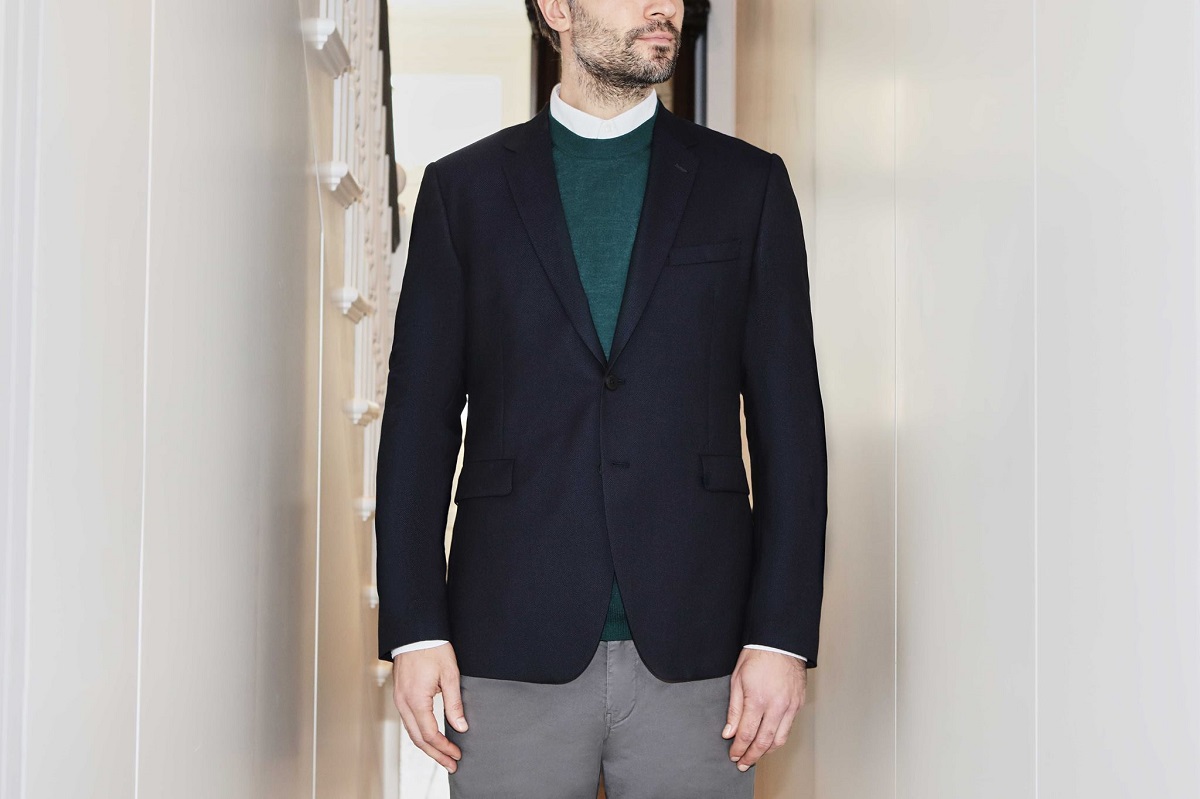
Casual
Casual gets divided into two sectors. One is simply your off-days look: a T-shirt or polo shirt, jeans or chinos, and trainers, perhaps with a light jacket like a bomber on top. Maybe you opt for a sweater when the temperatures drop. Ultra-casual veers into athleisure territory. This replaces the structure of jeans for joggers, finds polos too formal, and heads for a hoodie over a jacket.

Trending
2
3
4
5
6
7
8
9
10










